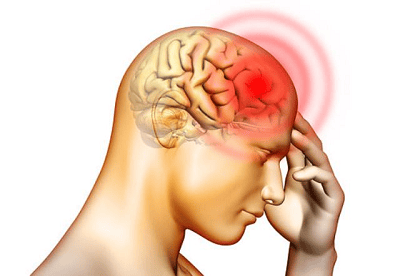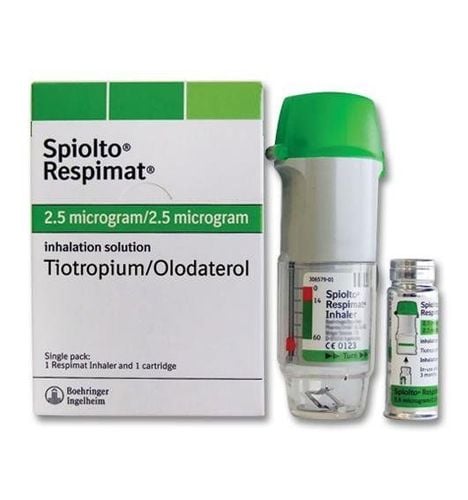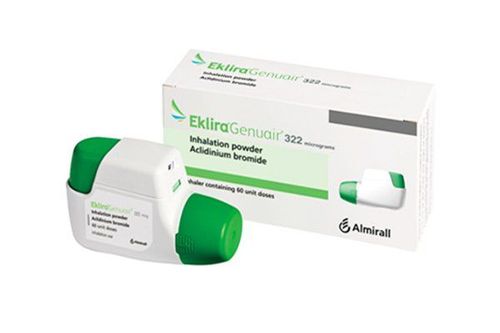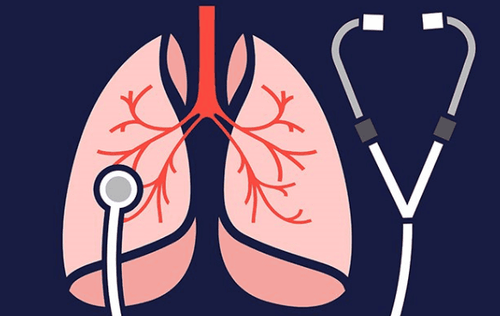This is an automatically translated article.
Lack of oxygen in the blood can lead to many serious life-threatening consequences. However, if you know what you need to do, it is possible that the condition will be controlled before it brings dangerous complications. One of the causes of hypoxia is chronic obstructive pulmonary disease (COPD).
1. Chronic Obstructive Pulmonary Disease and Hypoxia
Chronic obstructive pulmonary disease (COPD) is a group of lung diseases that includes medical conditions such as bronchitis and emphysema. The limited flow of air in and out of the lungs makes it the hallmark of all of these conditions, with chronic obstructive pulmonary disease making it difficult for sufferers to breathe.
Not being able to get enough oxygen into the body's lungs increases the risk of developing hypoxemia. Hypoxia is a medical condition where there is not enough oxygen to supply cells and tissues in the body. This condition can still occur when blood flow is normal.
2. Symptoms of hypoxia

Ho dai dẳng là triệu chứng của thiếu oxy máu
Oxygen plays an extremely important role for the cells and tissues of the body. The only way for your body to receive oxygen is through the lungs. Chronic obstructive pulmonary disease causes inflammation and swelling in the airways in the body. It also destroys lung tissue called alveoli. Chronic obstructive pulmonary disease also limits the flow of oxygen.
Symptoms of hypoxia include:
Rapid breathing at rest Rapid breathing after physical activity Decreased ability to perform physical activity Choking on waking Wheezing Persistent cough Slightly pale skin Pulmonary disease Chronic congestion is a chronic medical condition, so you may experience symptoms on an ongoing basis. If you notice any of the above symptoms, seek medical help immediately.
When you feel that your daily health is changing or your symptoms are getting worse, you should call 911 or the nearest emergency services, or go to the emergency room at the hospital. institute. This is extremely important if symptoms are accompanied by chest pain, fatigue, or lethargy.
3. Complications of hypoxia due to chronic obstructive pulmonary disease

Thiếu oxy máu do bệnh tắc nghẽn phổi mãn tính nếu không được điều trị có thể dẫn đến trầm cảm
Hypoxia due to chronic obstructive pulmonary disease makes breathing difficult, and it affects more than just the lungs.
When you can't get enough oxygen, the blood loses vital components. Oxygen is essential for the body to maintain basic functions. For example, a lack of oxygen in the blood can seriously affect heart and brain health.
HyperCO2 Hypoxia can also lead to hypercapnia, which occurs when the lungs retain too much CO2 leading to difficulty breathing.
Without air entering your lungs you will not be able to exhale air. This increases the amount of CO2 in the blood, and can be life-threatening. An imbalance between oxygen and CO2 in the body contributes to the progression of chronic obstructive pulmonary disease.
Other complications Hypoxia due to chronic obstructive pulmonary disease, when left untreated, can also lead to:
Depression and other mood disorders Fatigue Headache Dizziness High blood pressure Increased heart rate Rapid heart failure Progressive acute respiratory distress syndrome Secondary polycythemia vera, which occurs when the red blood cell count increases abnormally.
3. Treatment of hypoxemia

Bình chứa oxy
3.1 Oxygen Therapy Improves hypoxia by increasing the amount of oxygen consumed by the body. One popular method to deliver more oxygen to the body is oxygen therapy. This therapy is also commonly known as supplemental or infusion of oxygen. Conducted using a mechanical device to deliver oxygen to the patient's lungs. Supplemental oxygen will reduce shortness of breath, increase the amount of oxygen in the blood, and help reduce the amount of work that the heart and lungs need to do. It also helps to reduce CO2 levels in the blood. Before administering oxygen therapy, the doctor will give the patient a test to measure the blood oxygen level.
3.2 Oxygen tanks Oxygen therapy uses a compressed oxygen gas. Amount of oxygen compressed into a movable container. Oxygen from the tank will be delivered to the patient through tubes connected to the nose, a mask or a tube implanted into the trachea. A meter on the tank will keep track of the amount of oxygen you receive.
3.3 Oxygen concentrator Oxygen therapy is also available as an oxygen concentrator. An oxygen generator takes air from the environment, filters out other gases, and stores oxygen for use. Unlike compressed oxygen, the patient will not need to use pre-existing oxygen tanks.
Oxygen concentrator is useful for patients who need oxygen therapy all the time. But oxygen concentrators require electricity to operate, so they may not be as versatile as compressed oxygen cylinders.

Điều trị thiếu oxy máu bằng thuốc huyết áp giúp làm giảm sưng
3.4 Liquid Oxygen Another alternative is liquid oxygen. Liquid oxygen will convert to a gas when it leaves the container.
Although liquid oxygen may occupy a smaller area than compressed oxygen, it can still be evaporated. This means that the delivery of liquid oxygen to the patient will not last as long as other forms.
3.5 Medications In addition to oxygen treatments for hypoxia, and conventional medications for chronic obstructive pulmonary disease, you also need to take medications for breathing problems that are causing your breathing problems. by other conditions. These medications include:
Blood pressure medications to help reduce swelling Cardiovascular medications to control heart failure Cardiovascular medications to control chest pain Medicines to control indigestion or GERD Anti-allergic drugs In addition to treatment For medical treatment, it is also important to stay away from environmental triggers, which include:
Smoking Passive smoking Air pollution Chemicals or dust in the air Obstructive lung disease Chronic obstruction cannot be cured. However, it is important to treat this condition to prevent complications. One of the possible complications is respiratory failure, a common cause of death in chronic obstructive pulmonary disease.
If you have hypoxia due to chronic obstructive pulmonary disease, you will need long-term treatment to prevent complications of hypoxia. Treating the lack of oxygen will make it easier for you to breathe and allow you to do everyday tasks. Oxygen therapy can also help you sleep better at night.
Vinmec International General Hospital with a system of modern facilities, medical equipment and a team of experts and doctors with many years of experience in medical examination and treatment, patients can rest assured to visit. examination and treatment at the Hospital.
To register for examination and treatment at Vinmec International General Hospital, you can contact Vinmec Health System nationwide, or register online HERE.
Reference source: healthline.com
MORE
Session 1: Is Chronic Obstructive Pulmonary Disease Asthma Asthma? How does chronic obstructive pulmonary disease (COPD) affect the heart? Symptoms and treatment of chronic obstructive pulmonary disease













